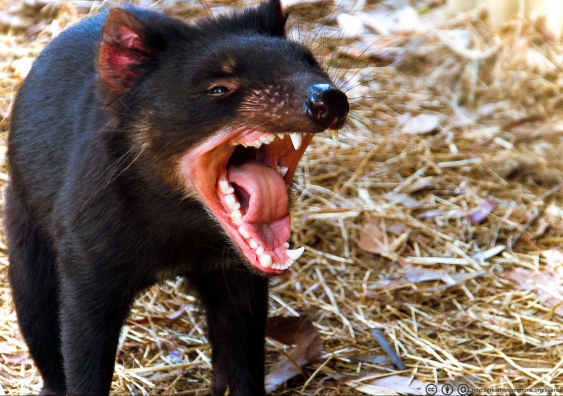Wholly dooley, look what we’ve found
A new fossil site in Queensland is home to a range of strange new species.
A new fossil site in Queensland is home to a range of strange new species.

A new species of extinct flesh-eating marsupial that terrorised Australia’s drying forests about five million years ago has been identified from a fossil discovered in remote north-western Queensland.
The hypercarnivore, which is thought to have weighed about 20 to 25 kg, is a distant and much bigger cousin of Australia’s largest living carnivorous marsupial, the Tasmanian Devil, which is about half the size.
Named Whollydooleya tomnpatrichorum, it is the first creature to be formally identified from a range of strange new animals whose remains have been found in a fossil site in Queensland dubbed ‘New Riversleigh’.
A description of the new marsupial, based on its fossil molar tooth, is published in the Memoirs of Museum Victoria.
“Whollydooleya tomnpatrichorum had very powerful teeth capable of killing and slicing up the largest animals of its day,” says study lead author UNSW Professor Mike Archer.
This exciting new area was detected by remote sensing using satellite data.
The late Miocene period between about 12 and five million years ago, when Australia began to dry out and the megafauna began to evolve, is one of the most mysterious and least well-understood periods in the continent’s past. Fossils of land animals from this period are extremely rare,
because of the increasing aridity.
“Fortunately, in 2012, we discovered a whole new fossil field that lies beyond the internationally famous Riversleigh World Heritage Area fossil deposits in north-western Queensland,” says Archer.
“This exciting new area – New Riversleigh – was detected by remote sensing using satellite data.”
With the help of ARC funding and a grant from the National Geographic Society, Archer and his colleagues began to systematically explore New Riversleigh in 2013.
The new species’ highly distinctive molar was one of the first fossil teeth obtained from a particularly fossil-rich site in the area which was discovered by team member Phil Creaser and named Whollydooley Hill in honour of his partner and Riversleigh volunteer Genevieve Dooley.
“New Riversleigh is producing the remains of a bevy of strange new small- to medium-sized creatures, with Whollydooleya tomnpatrichorum the first one to be described,” says Archer.
He says even as it was terrorising its prey Whollydooleya’s “own days were numbered” as the forests dried around five million years ago.
“While it is at least distantly related to living and recently living carnivorous marsupials such as devils, thylacines and quolls, it appears to have represented a distinctive subgroup of hypercarnivores that did not survive into the modern world,” Archer says.
“Climate change can be a merciless eliminator of the mightiest of mammals.”